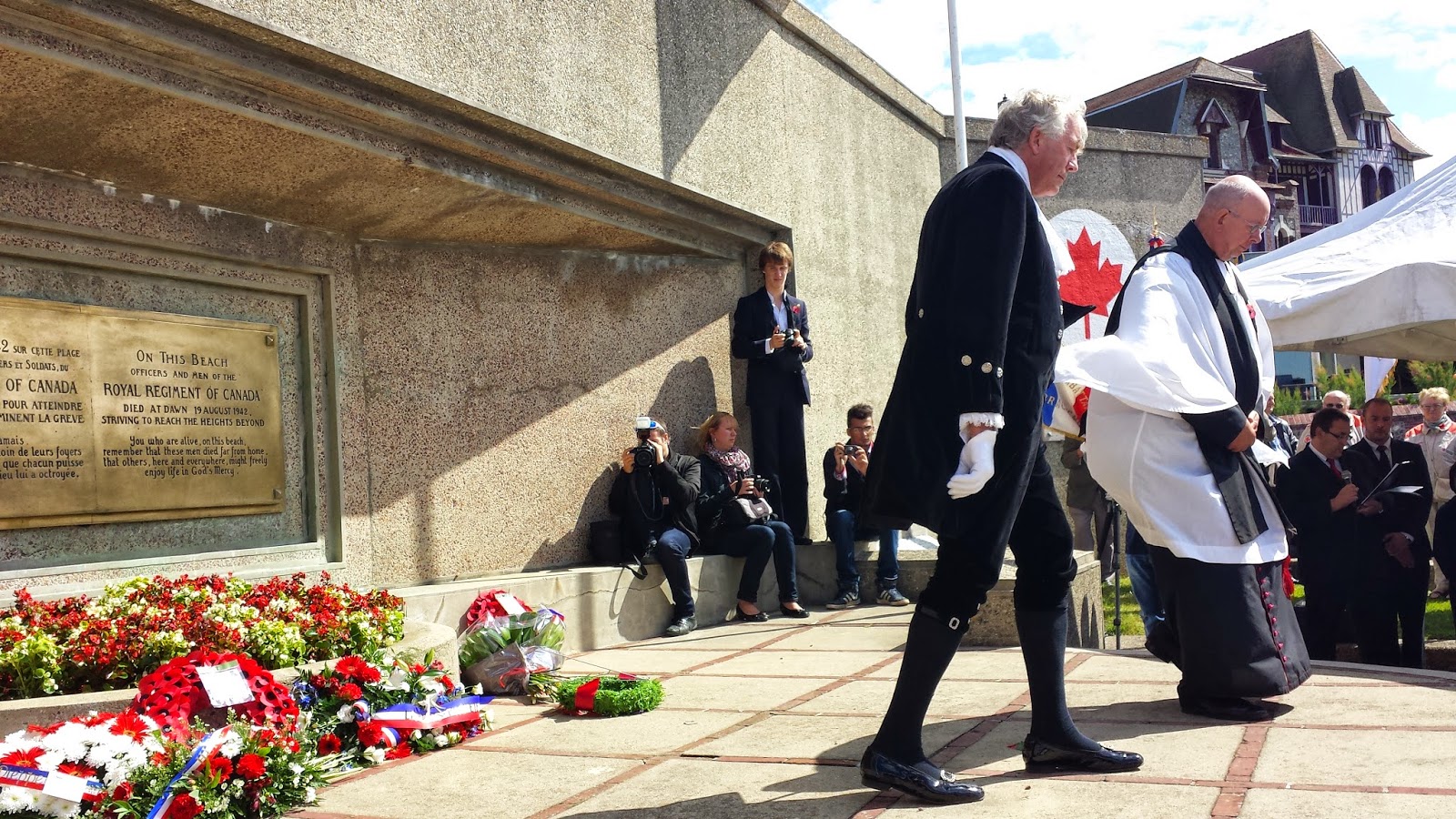 |
| On 19th August 1942, the scene looked a little different, as a disastrous raid from the UK led to the deaths of hundreds of young men on Dieppe's beaches, most of them Canadian volunteers. This photo is on the information board at Puys Beach - scene of one of the worst massacres. The raid, it is said, can be justified because we learned much from our mistakes that day that led to our success on D-Day, two years later. However, these assumptions can be questioned. There is a good reasoned article here: http://www.bbc.co.uk/history/worldwars/wwtwo/dieppe_raid_01.shtml |
 |
| This permanent display is above their graves, on the church wall. John Edwin Gardiner, aged 23. Norman Monchier, aged 19. RIP |
 |
| Then on to the Commonwealth War Graves Commission Canadian Cemetery, Cimitiere des Vertus, for a twilight vigil. Here, there are 948 graves, of which 187 are unidentified. |
 |
| After a wreath laying at the foot of the Cross of Sacrifice, there was a vigil held in front of the Stone of Remembrance, and an 'eternal flame' (inverted commas as it is dismantled after the ceremony...) burning at the heart of a maple leaf. Here, the young people in red jackets, forming the Fourth Guard to stand vigil, are members of the Vimy Foundation |
'The Angel of Dieppe' - Sister Agnes-Marie Valois, who celebrated her 100th birthday in July. She tended casualties on the beach. Seeing a German soldier about to shoot a badly injured young Canadian, she stood between the injured man and the gun and said he'd have to shoot her first.
"It wasn't war," she said. 'It was a massacre."
Sister Agnes-Marie laid a wreath. She stood, with help, throughout the silence.
 |
| Then we went to a new development on the outskirts of Dieppe, where seven of the new streets are being named after the fallen of 19th August. Robert Boulanger was the youngest to die that day. |
Puys Beach 19th August, 1942.
So ended one of the most moving series of commemorations. The series had begin at Newhaven, in Sussex, the week before, with a ceremony at the Canadian Engineers' memorial, as so many of the Canadian soldiers left from here for Dieppe.
In Newhaven, I chatted to an elderly gentleman in a wheelchair - a veteran of the Raid. His name is Alan Saunders, and he is nearly 92. Blind now, he told me he was looking forward to going on the longest zip wire in Europe, in north Wales, after his 92nd birthday. (!) He was wearing not only his own WW11 medals, but those of his father who served in WW1.
On 19th August 1942 he was nineteen years old and serving with the Royal Marine Commandos. Caught on a French beach amid shellfire and bullets, he and three chums decided to swim for it rather than stay and be killed. They made it five miles out into the channel before being picked up by one of our destroyers.
At the wreath laying, he was just about able to stand out of his chair, make his way with the help of two colleagues across the grass to the memorial, and lay a wreath.
Then he stood alone, snapped to attention, and saluted.
.













No comments:
Post a Comment